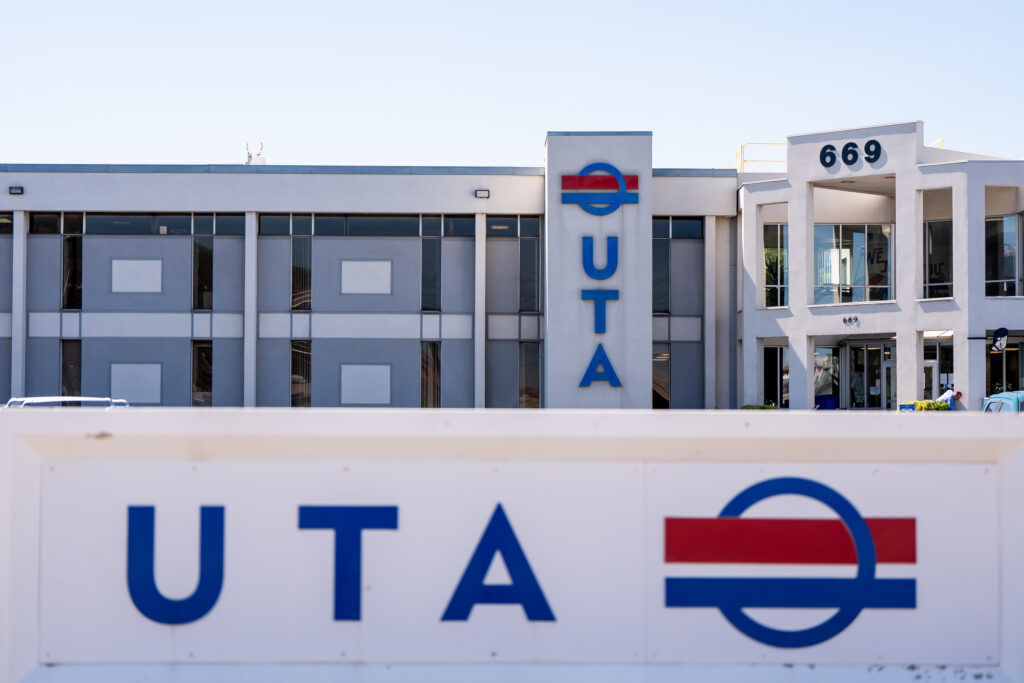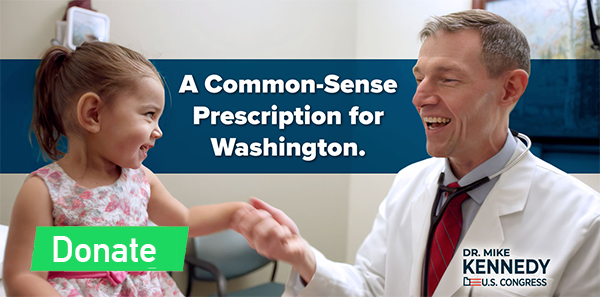Utah News Dispatch
UTA needs to innovate in performance, legislative audit says, but other challenges linger


The Utah Transit Authority building in Salt Lake City is pictured on Thursday, April 18, 2024. (Photo by Spenser Heaps for Utah News Dispatch)
With potential Olympic games coming to the state in 2034, the Utah Legislature hopes the Utah Transit Authority is able to innovate and solve some of the issues that prevent some commuters from taking public transportation.
Lawmakers this week heard from the Office of the Legislative Auditor General, which presented an audit on the efficiency and effectiveness of the UTA’s governance and planning.
Auditors found that ridership on the agency’s transit system has not recovered to pre-pandemic levels, that it has been beset by delays, and it has been hindered by slow development along key corridors that would boost ridership.
“We have many people who said the bad news is we have 10 years before the Olympics comes. Other people say the good news is we have 10 years. And we do have 10 years, but in that 10 year period of time, you’re right on; we need to prepare,” Senate President Stuart Adams, R-Layton, said in a Legislative Audit Subcommittee meeting on Wednesday.
GET THE MORNING HEADLINES DELIVERED TO YOUR INBOX
Audit manager Jesse Martinson told the subcommittee that the agency has faced “instability” in its planning and processes.
From 2018 to 2023, UTA has seen turnover in key leadership positions. There have been three executive directors plus one interim director. There have also been two chief operating officers and three chief financial officers, among other changes.
“While board leadership has remained stable since 2020,” the audit reads, “we believe that turnover in UTA executive leadership positions is a major factor that contributed to the delay of key governance processes.”
The current executive director Jay Fox has been in his role for two years now, Martinson said, which could be positive for the status of public transit.
“We feel that the stability they have now will help solidify some of their ability to plan and also take care of certain issues such as grant management,” Martinson said, “and also create an enterprise risk management program internally, so they can be successful.”
Ridership
Despite Utah’s population growth, UTA has not made progress in increasing ridership over the past decade, according to the audit.
Transit trips per capita numbers never fully recovered after dropping by half in 2020, when the COVID-19 pandemic hit. And ridership may not reach pre-pandemic levels in some time.
This may be because of behavior changes, such as an increase in people working from home. Though UTA’s ridership has been improving faster than two-thirds of other transit agencies in the country, the auditors don’t expect transit users to increase at the same rate as Utah’s population growth.
That means UTA has to become an innovator and enhance speed, performance and frequency of its services, the audit said.
“If UTA fails to adequately increase ridership over the following decades, daily traffic will only continue to worsen,” according to the document.
In a place like Utah that has a big car culture, Lehman said, transit needs to be able to compete with cars’ speed.
“There are things that can be done, (that) other cities we looked at are doing, (such as) signal priority, for instance. Basically, the bus comes up or a train comes up to a light, the light turns automatically. (They have) dedicated lanes for buses so they can avoid traffic, bus stop optimization (…) to avoid constant stopping,” Lehman said.
Performance is also a concern, with service interruptions that have lasted more than 10 minutes. FrontRunner, for instance, had 63 interruptions in 2021. That number climbed to 136 in 2023, according to the audit.
“Last year we had a very rough year at the beginning with our FrontRunner service,” UTA executive director Jay Fox told the committee, “because we had overhauled our locomotives and we were having problems with these overhauls.”
Those numbers have improved this year, Fox said. In January 2024, there were just nine delays of 10 minutes or more, he added.
FrontRunner ridership is also trending up by 12%, Fox said, which is 5% over the target the agency set. In January, February and March, FrontRunner was on time 93% of the time.
Density

Residential subdivisions in Herriman are pictured on Monday, January 15, 2024. (Photo by Spenser Heaps for Utah News Dispatch)
Transit needs proper housing density or transit-supportive development, August Lehman, audit supervisor told the subcommittee.
“You have to have density along certain corridors, because not everything has to be dense, just on certain corridors, to make transit effective and useful,” Lehman said. “If you don’t have that, you have a very inefficient transit system.”
So, it’s key that cities, which have land use authority, plan for residential and commercial development around major transit corridors “to improve the connections between housing, employment, education, recreation and commerce,” according to the audit.
The Legislature updated its General Plan Preparation Code in 2019 to set more requirements for cities, towns and counties to plan development around transit corridors. Some municipalities in UTA’s service area were already considering transit before the state mandates, but the transit authority could be more proactive in reaching out to cities that need to find ways to expand public transportation.
“UTA is the expert when it comes to transit, when it comes to the technical side of transportation, and we believe that municipalities, a lot of them, are in need of this technical assistance,” Martinson said.
Although land use decisions start with local governments, the Utah Department of Transportation has a role in development, said Carlton Christensen, chair of the UTA Board of Trustees.
“Our initial system was built on residual rail corridors and it dictated a lot of things,” he said. But, as cities look at future development on corridors, they may also have to work with the state, as some of the land available to develop would align with state road projects.
“The conversation that we’ll continue to have, and predictively we’re having with UDOT, is that those corridors ought to be (constructed simultaneously),” Christensen said. “And there ought to be a transit component in there.”
The post UTA needs to innovate in performance, legislative audit says, but other challenges linger appeared first on Utah News Dispatch.




















